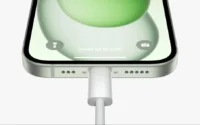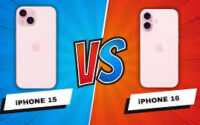Battery Life and Charging: What to Expect from the iPhone 16
rs on a Single Charge?
Battery life has always been a crucial factor for smartphone users, and Apple has consistently worked on improving this with each new iPhone release. The iPhone 15 series already made strides in battery performance, especially in the Pro models, but the iPhone 16 is expected to push this even further.
Larger Battery Capacity
One of the most prominent rumors is that the iPhone 16 will feature a larger battery than its predecessors. This would naturally increase the amount of power available, extending battery life across the board. Reports suggest that Apple is exploring new battery technology that could pack more energy into a smaller physical size, allowing for a larger battery without increasing the thickness of the device.
Power-Efficient A18 Bionic Chip
Another factor that could significantly boost battery life is the A18 Bionic chip, which is expected to power the iPhone 16. Built on an advanced 3nm process, the A18 chip is likely to offer improved performance while consuming less power. A more efficient chip means the iPhone 16 will be able to run demanding tasks without draining the battery as quickly.
Software Optimization
In addition to hardware improvements, Apple is known for optimizing iOS to work efficiently with its hardware. With the release of iOS 18 alongside the iPhone 16, we can expect new power-saving features and better background management, which will help extend battery life without sacrificing performance. Features like adaptive brightness and enhanced app sleep modes could reduce battery drain when the phone is not in use.
2. Faster Charging Speeds: USB-C to the Rescue?
One of the most exciting potential updates to the iPhone 16 is the switch from Apple’s proprietary Lightning port to the universally adopted USB-C. This change could have a major impact on the device’s charging speeds, bringing it in line with competitors that already offer super-fast charging via USB-C.
USB-C and Fast Charging
With the introduction of USB-C, the iPhone 16 could support much faster charging speeds than previous models. USB-C can handle significantly higher power levels, which means that the iPhone 16 might support charging at up to 100 watts or more, compared to the 20-30 watts typically seen on current iPhones.
Faster charging would allow users to quickly top up their phones, potentially getting a 50% charge in just 15-20 minutes. This could be a game-changer for users who need to charge their phones quickly on the go.
GaN Chargers: The Future of Power Bricks
There’s also speculation that Apple may begin offering GaN (Gallium Nitride) chargers as part of the iPhone 16 ecosystem. GaN technology allows for smaller, more efficient power bricks that can deliver higher wattage without overheating. This means users could charge their iPhones faster without the bulky and heavy chargers typically associated with high-wattage charging.
3. Wireless Charging and MagSafe Enhancements
Wireless charging has become a standard feature in iPhones since the iPhone 8, but with the iPhone 16, Apple may introduce significant upgrades to its wireless charging technology. MagSafe, Apple’s magnetic wireless charging system, could see enhancements in both charging speed and efficiency.
Faster Wireless Charging
Currently, MagSafe offers wireless charging at up to 15 watts, which is slower than most wired charging solutions. However, there are rumors that the iPhone 16 may support faster wireless charging speeds, potentially increasing to 20-25 watts. This would make wireless charging a more viable option for users who want the convenience of charging without cables but still need fast results.
Expanded MagSafe Ecosystem
Apple could also expand the MagSafe accessory ecosystem, offering new charging docks, battery packs, and stands that take full advantage of the iPhone 16’s improved wireless charging capabilities. Expect more third-party accessories to follow suit, as USB-C and MagSafe become more prominent in Apple’s device lineup.
4. Power-Saving Technologies: Maximizing Battery Life
The iPhone 16 is expected to introduce new power-saving technologies that could significantly improve battery life, even for users who spend a lot of time on demanding apps and tasks. These features are likely to be powered by both hardware and software advancements.
Smart Power Modes
Apple could introduce more advanced power modes that automatically adjust performance based on usage patterns. For example, the iPhone 16 might feature a smart power mode that dynamically reduces background app activity, dims the display, and lowers processing power when the device detects periods of inactivity or low battery.
Efficient Display Technology
The iPhone 16 is rumored to include a more power-efficient OLED display, possibly featuring LTPO (Low-Temperature Polycrystalline Oxide) technology. LTPO displays allow the refresh rate to adjust dynamically, scaling from 120Hz for smooth scrolling and animations down to 1Hz when the screen is static. This could save a significant amount of battery life during everyday use.
AI-Driven Battery Management
Apple could also leverage AI-driven battery management to optimize power consumption based on user habits. For instance, if the iPhone 16 learns that a user charges their device at night, it might prioritize power-saving features during the day and reduce charging speeds to preserve battery health in the long term.
5. Battery Health and Longevity: Preserving Power Over Time
Battery degradation is a common concern for smartphone users, especially for those who keep their devices for several years. Apple has introduced features like Optimized Battery Charging to slow down battery wear, and the iPhone 16 could bring further improvements.
Advanced Battery Health Features
There’s speculation that Apple may introduce more granular control over battery health management. The iPhone 16 might provide users with detailed insights into their battery’s condition, along with suggestions for preserving longevity, such as charging habits and usage recommendations.
Solid-State Battery Technology?
Though still in its early stages, solid-state battery technology could eventually make its way into future iPhones. Solid-state batteries promise greater energy density, which translates to longer battery life, faster charging, and improved safety. While it’s unlikely we’ll see this technology in the iPhone 16, it’s a direction Apple is undoubtedly exploring for future models.
6. Conclusion: A Leap Forward in Battery and Charging
The iPhone 16 is shaping up to be a significant leap forward in terms of battery life and charging capabilities. With a larger battery, the power-efficient A18 chip, faster charging speeds through USB-C, and potential wireless charging upgrades, the iPhone 16 could offer users a more convenient and long-lasting experience. Coupled with new power-saving technologies, this may make it Apple’s most efficient iPhone to date.
For users who rely heavily on their phones throughout the day, these advancements could provide the much-needed improvement in battery performance, reducing the need to constantly search for a charger and ensuring the iPhone 16 is ready when you are.


